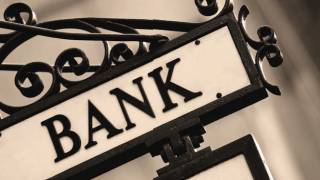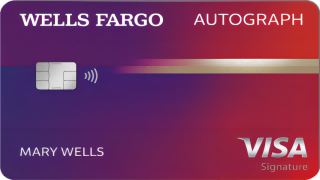The Application of Blockchain Technology in the Financial Industry
In the finance sector, blockchain technology is a pioneering invention that has the potential to decrease fraud, guarantee fast and secure transactions and trades, and help manage risk in the globally interconnected financial system.
However, blockchain has other applications beyond just tracking transactions and trades. In an era of digital transformation where our global financial system is becoming more intertwined every day, it is important for investors to comprehend how blockchain is altering this landscape.
Moreover, different entities gain information about how they can have access to this transformative technology as well as regulate it.
Digitization of Financial Instruments
The digitization of financial instruments such as digital assets, smart contracts, and programmable money enhances blockchain benefits by enabling unparalleled interconnectivity and programmability among products, services, assets, and holdings.
This switch has resulted in a redefinition of commercial or financial market practices that come with lots of business pros.
●Authenticity and Scarcity: Guarantees data integrity while showing where an asset came from and how it got to the current holder.
●Programmable Capabilities: Encompassing governance, compliance, data privacy, and managing stakeholders.
●Streamlined Processes: Automation reduces operating costs in settlement processes, giving rise to real-time settlements by reducing processing time and errors.
●Economic Benefits: The costs incurred on infrastructure and operations decrease as the expenses involved in transacting are reduced.
●Market Reactivity: Increased customization of securities issuance time frames.
●New Products and Markets: Securely scalable transfers of assets allowing for fractional ownership, including tokenized economies that can be easily monitored at all times.
Overall, these benefits encourage transparent governance structures, optimized business models, incentivized alignment liquidation, increased liquidity, lowered cost of capital, and more investment availability for investors.

Blockchain in Capital Markets
Capital markets refer to the pairing of issuers and the demand for capital with investors having corresponding risk-return profiles. Raising capital for entrepreneurs, startups, or established businesses can be a difficult process.
Such companies face more stringent controls, longer lead times, fluctuating rates of interest, and liquidity risks.
In particular, in emerging markets, they must deal with the absence of strict monitoring, comprehensive regulation, and appropriate market infrastructure for issuance, settlement, clearing, and trading.
Blockchain offers numerous advantages in the following use cases in capital markets:
●Decentralized utilities eliminate any single point of failure.
●The streamlining of processes for facilitation of activities in the capital market reduces costs and settlement times.
●Digitizing workflows and processes reduces operational fraud risks like human error or the risk associated with managing counterparties.
By digitizing or tokenizing assets or financial instruments and making them programmable, it becomes easier to control and trade such items.
They become tradable on tokens that have gained wider access to markets through increased connections as well as fractional ownership possibilities. This enhances liquidity while reducing the cost of capital.

Blockchain in Trading Finance
Trade finance is a system of procedures, infrastructure, and financing options that maintains the flow of international trade. In spite of technological advances, it is still paper-based, so its vulnerability to hacking remains high.
This means that trades usually undergo a long processing time, lasting up to 90 to 120 days, in order to validate a letter of credit, verify documents, and gain stakeholders’ trust.
Blockchain technology seeks to digitalize the trade loan lifecycle by tightening security and increasing efficiency. It promises transparent governance systems, faster transactions, lesser capital outlays, and lessened exposure to acts of fraud and error.
With blockchain applied, it can be possible to get authenticated documentation, real-time verification of financial data, digitization of assets for prompt settlements, efficient financing structures through secure networks, and one-stop finance solutions for the entire supply chain.
Blockchain in Banking and Lending
Core banking services range from transactions to loans, mortgages, and payments. Many of these services are deeply rooted in traditional methods.
For example, it can take an average of 30 to 60 days for mortgage applicants to go through the process of confirming their details before a loan is disbursed, while small or medium-sized enterprises requiring business loans may wait for a period between 60 and 90 days.
Blockchain technology can enhance operations in banks and other financial institutions by curbing risks that exist between parties during processes as well as shortening timelines for issuances and settlements.
This includes secure documentation with KYC/AML data, an optimized credit scoring model, the implementation of syndicate formation and automated fund disbursement, digital asset management with real-time collateralization capabilities, and regulatory compliance enforcement enabled via digitization.

Blockchain in Global Payments and Remittance
The current global payment and remittance sector is plagued by middlemen who charge for their services. On average, the whole process takes between two and seven days, costing a hefty global fee of 6.94% to send a mere $200 across borders.
The result is that fees, intermediary charges, and bank fees reduce the total amount of remittances by as much as $48 billion worldwide.
With technologies like blockchain, this can be improved by introducing faster settlement times and reducing costs.
Among other things, these include instant and safe domestic retail and wholesale payments, cross-border transactions, real-time gross settlement (RTGS) among central banks and large commercial banks, digitized KYC/AML data for fraud prevention, automated regulatory compliance, as well as support for tokenized fiat currencies, stablecoins, or cryptocurrencies in general.
Blockchain for Regulatory Compliance
Regulatory compliance is of the utmost importance in business and finance to maintain the laws and rules that govern financial activities. In a world where regulations are increasingly complex, it is difficult for companies to know what they need to do in order to be compliant as they expand across international boundaries.
Digital assets embedded with unique governance and compliance features enable blockchain technology to facilitate real-time data verification, reporting, and regulatory oversight while simplifying processes.
Functionally, this reduces friction in operations audit errors that are manual and suggests incentive structures that enhance network governance so as to ensure smooth adoption of diverse regulatory requirements across different jurisdictions.
Conclusion
Emerging as a revolutionary in the financial industry, blockchain technology has become a transformative force in various sectors of this economy.
This ranges from digitizing financial instruments to revolutionizing capital markets, trade finance, banking and lending, global payments, remittances, and regulatory compliance, among other benefits.
OTHER NEWS
-
- A Comprehensive Guide to Consolidating Student Loans: Simplifying Repayment for Financial Success!
- By Little Grapes 24 Jul,2023

-
- Recently, Silicon Valley Bank Declared Bankruptcy! How Will This Affect the Financial World?
- By Wendy 24 Apr,2023

-
- Navigating the Automotive Landscape: Key Insights into the Car Business
- By Little Grapes 08 Jan,2024

-
- Evolving Landscape of the Banking Industry: Navigating the Winds of Change!
- By Little Grapes 17 Jul,2023

-
- Adding Value to Your Real Estate Investment
- By Thalia Oosthuizen 15 May,2024

-
- Top Accredited Online Colleges You Should Consider
- By Prodosh Kundu 02 Sep,2024

-
- Some Tips on Buying a Condo!
- By Wendy 24 Apr,2023

-
- Understanding Reinsurance: How it Benefits the Insurance Industry and Consumers.
- By Wendy 30 May,2023

-
- Quick Tips for Selling an Unused Property!
- By Wendy 24 Apr,2023

-
- Strategic Financial Planning for Major Life Events
- By Prodosh Kundu 15 May,2024

-
- Wells Fargo Credit Cards: A Comprehensive Overview.
- By Wendy 24 Apr,2023

-
- Four Tips to Save on Real Estate Commissions
- By Prodosh Kundu 27 Aug,2024

 1
1 1
1